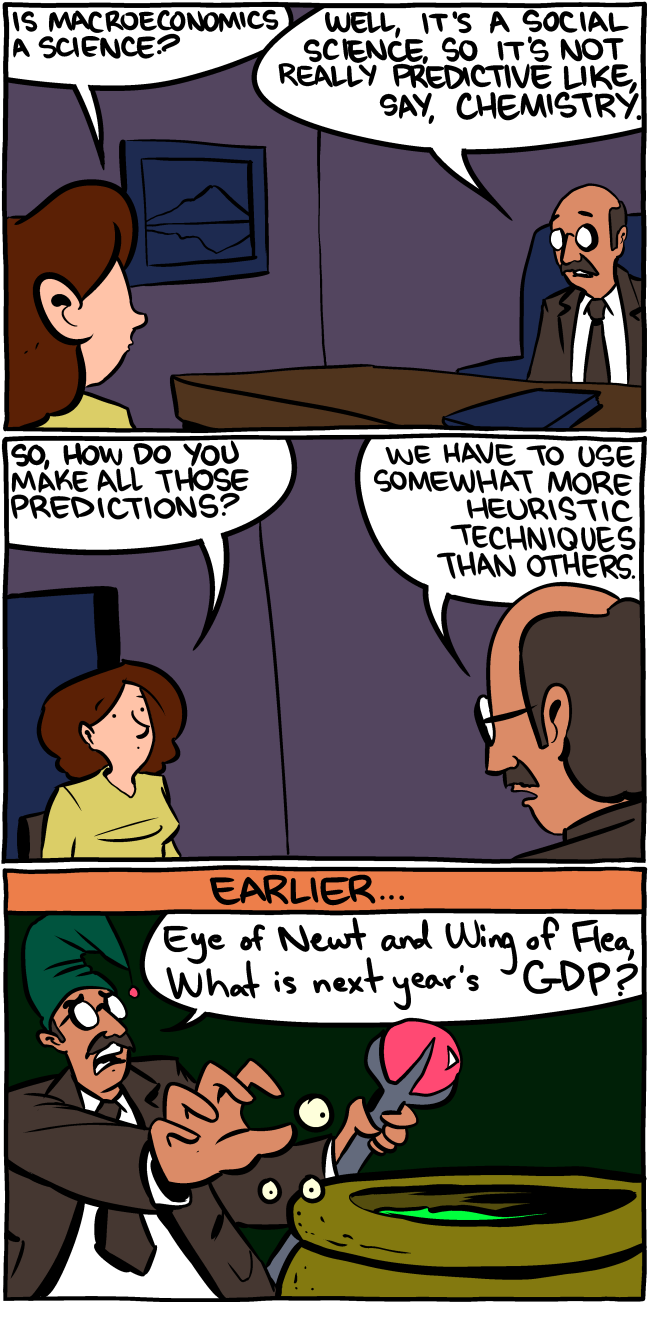Perhaps listening to Antony Davies on fiscal stimulus is worse.


Daniel Kuehn is a doctoral candidate and adjunct professor in the Economics Department at American University. He has a master's degree in public policy from George Washington University.
I really don't get Davies' approach. It's not like the question is does central planning work. I think fiscal stimulus should be explained as an alternative transmission mechanism to monetary policy -- that way the point on the conditions that make fiscal policy attractive would be clearer.
ReplyDeleteAnd the Keynesians scream the opposite. "It has to be the baseline, not the multiplier." Kind of tired arguments. Unemployment is a hell of a lot harder to predict in a downturn.
ReplyDeleteDavie's graph doesn't support either side. There's no slope up OR down. In his PowerPoint slides, there is a slight, but not compelling, negative correlation when plotting as a 4Q moving average. It might be interesting to look at the plot controlled for debt changes (both public and private).
If there's going to be a stimulus, I would have rather seen the stimulus spent as $8,000 checks sent to everyone in the mail. People would have tweaked their own economic situations, in ways that would have benefited the economy.
What's tired about them? It is tiring that we're still having the argument. Which case do you think is better?
DeleteMy frustration is that a lot of Keynesians just seem to ignore Romer-Bernstein rather than make the case.
Davies's graph doesn't support either side because it's not up to the task of clarifying anything, not because it is up to the task and is ambiguous.
What’s tired about them is that I’ve heard the argument so many times and it’s all a guess about what-if.
ReplyDeleteI think the peak would have been nearly identical with or without the stimulus. It’s hard to imagine that the stimulus could have immediately capped unemployment growth or that unemployment would have peaked significantly higher without the stimulus. Demand shock has a lot more impact on firing than a demand increase has on hiring, especially in a recession. Capacity utilization is low and uncertainty is high. Even when hiring does occur, it is a subset of the firm’s employees. Those directly needed for increased production. The same employees that are often spared cuts in the downturn.
The second part of the curve does not look very good for the stimulus, but there was a lot of other stuff going on and the stimulus was not well designed in my opinion. Retroactive tax cuts were enough to make me question whether they even have a clue about the real world. My guess is that the multiplier was positive, but that it will negatively impact growth when we pay it back.
I agree that Davies's graph was not up to the task. Too many variables that can't be accounted for. I also think rate of change of growth would be a better way to measure economic response to stimulus than percent increase.
You'd need a better sample, too. Say that fiscal stimulus is only acceptable at the ZLB. Then taking data from a non-ZLB year is not a way of testing this claim.
DeleteThanks, Jonathan. Very good point.
Delete